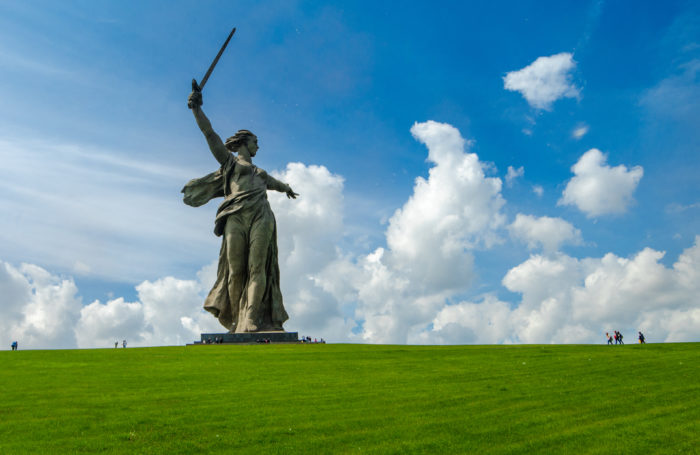by Keith Lowe
Years ago, when I was first starting out as a WWII historian, I spent a day with a senior special forces officer who gave me a piece of advice I have never forgotten. Archives are great, he told me, but if you really want to understand how a particular battle or event unfolded, you have to visit the site where it took place.

His advice holds good for all kinds of history. Whether you are studying military, political or social events, the physical spaces in which they took place are often vitally important.
My most recent book is all about physical spaces. It is a study of the world’s most famous WWII monuments – from Hiroshima and Nagasaki in Japan, to the statues in Arlington, Virginia devoted to American heroes. It could quite easily have been written in the comfort of an archive, or even in my study at home: photos of these places are not exactly difficult to find online. But one can never properly understand a monument without seeing it in person.
Take the Katyn memorial in New Jersey, for example. It is a rather gruesome statue of a soldier being stabbed through the back with a bayonet. It is dedicated to the memory of the Polish officers who were murdered by the Soviets in 1940, and you would be forgiven for thinking that that was the only thing that it is about.
But a visit to the monument in Jersey City reveals something very different. It sits on the banks of the Hudson River, with a panoramic view of the Manhattan skyline behind it. If you look closely, you will see that there is a plaque dedicated to the events of 9/11 on the plinth – events that took place directly opposite this spot. So this is not just a monument devoted to events that happened 80 years ago and thousands of miles away: it is actually a very local monument, put up by local people to commemorate their own experiences.
The concentration camp at Auschwitz is another place I describe in my book – and another place that you really have to visit in order to properly understand it. I have spent many years studying the horror that took place there, but it was not until I visited in person that I finally grasped the way that this vast killing machine had been put together. Nor did I properly understand its scale. The miles of barbed wire and the endless rows of ruined huts seem to stretch on forever – it is a sight that can only make you feel small and powerless.
Some of the most impressive monuments I have ever seen are in Russia, and these certainly cannot be fully understood without visiting them. In Volgograd, for example, there is a gigantic statue of ‘Mother Russia’. It stands on a hill to commemorate one of the truly epic battles of the Second World War: the Battle of Stalingrad. I already knew that this monument was taller by far than the Statue of Liberty in New York, but it was not until I stood beneath it that I truly grasped what that meant. The statue is vast. As I stood beside her feet, I realised that I myself was about the same size as her big toe.
My visit to this particular monument taught me all kinds of things. The statue, it turned out, was just one part of a whole memorial complex that covers a hill outside the city. It contains half a dozen other statues, each of them higher than my house, but also a mausoleum, a cemetery, and an everlasting flame.
The day I visited was just an ordinary Friday, but the people who came here treated it as if it were Memorial Day. I watched mothers bringing their children to lay flowers beside the monuments. I watched young soldiers in dress uniforms come to pay their respects, their chests clanking with medals and their eyes bulging with tears. The Battle of Stalingrad was not just a historical event to these people: it was still alive in the present day.
There are darker meanings to this monument too, which I would never have discovered had I not spent a whole day walking around the site. The statue on top of the hill is holding up a sword, and beckoning to the soldiers of the Red Army to come and fight for her. If you take the time to hike all the way round to the back of the monument, you can still find the people she is beckoning to. They are all dead, lined up in rows in the cemetery behind her.
Nothing will ever replace archival research, but that does not mean that historians should neglect other ways of gathering information. Visiting the sites that we study can be costly, and time-consuming, and can sometimes seem like a waste of time. But occasionally it yields pearls of insight that cannot be found any other way.

Keith Lowe is the author of the critically-acclaimed Inferno: The Devastation of Hamburg 1943, and Savage Continent, aninternational bestseller and the winner of both the Hessell-Tiltman Prize for History (2013), and Italy’s prestigious Cherasco History Prize (2015). He lectures on both sides of the Atlantic, appears on TV and radio in Europe and the US, and writes for a variety of magazines and newspapers around the world. He lives in north London with his wife and children.
